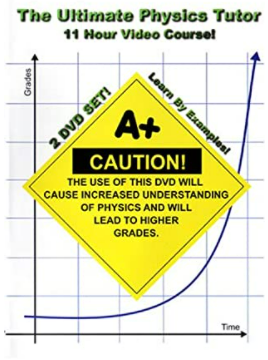At any rate, the problems in this, while geared more toward the algebra-based physics level, still helped me get through the first semester of calc-based physics with an A. And, there were actually a couple of problems worked out in this set that was very similar to the "easier" homework problems we were assigned (when our professor occasionally assigned us a level-1 problem). The set covers the major topics from the first semester of physics, which is basically the semester on Newton's laws of motion. It starts out with motion in one dimension, then discusses the equations of motion in one dimension (which you will have to memorize), scalars and vectors, projectile motion, Newton's laws of motion, Newton's Laws with friction, kinetic, and potential energy, impulse and momentum, work, collisions, angular speed, and acceleration, totational motion, tangential speed, and centripetal force, gravitation, torque, and then ends with the physics of liquids.
Like Jason's math sets, it is just him in front of a whiteboard working out problems. He takes you through the process of breaking down problems, writing a picture and creating force diagrams, and then working out the steps. He also shows how he does unit conversion/dimensional analysis (which makes way more sense than reading it from the first chapter of the book) to make sure to get the problem into the correct units before you solve it. He gives enough of the theory to understand the equations but focuses on solving problems. Really the only topic he did not go as deeply as I would have liked is the problems involving static equilibrium. He did have some, but those were the bane of my existence in first semester physics, and I hated Statics class (although my teacher for that was better than my physics teacher, so I understood it a bit more) with a passion.
I definitely recommend getting this set no matter what level of physics you are taking (unless it is a physics class with no math, then this is probably overkill). Jason makes a lot more sense of the material than a lot of professors do (certainly better than mine did), and he walks through each problem step-by-step never assuming the person watching knows more than they do. Really, the only thing he assumes is that you know algebra, which anyone taking a class with this material should know. So, if you are a visual learner, then this will probably be very helpful for you and I highly recommend it.

No comments:
Post a Comment